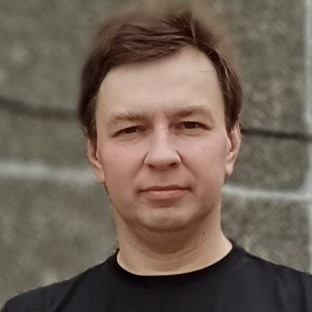Gap Symmetry and Structure of Superconductors
A special issue of Symmetry (ISSN 2073-8994). This special issue belongs to the section "Chemistry: Symmetry/Asymmetry".
Deadline for manuscript submissions: closed (29 February 2020) | Viewed by 29356
Special Issue Editor
Interests: unconventional and high-Tc superconductivity; spin fluctuation theory of pairing; impurity scattering; theory of strongly correlated electron systems
Special Issue Information
Dear Colleagues,
Symmetry of the gap is the fundamental property of the superconducting state in a material. It is tightly related to the underlying mechanism of Cooper pairing, and, therefore, knowledge of the symmetry put severe constraints on the theories of superconductivity. Even more information can be gained from the particular structure of the gap. The latter term is used to designate the momentum-dependent variation of an order parameter within a given symmetry class. That is, gaps with the same symmetry may have very different structures, such as s+- and s++ states belonging to the same A1g representation in iron pnictides.
The presence of several electronic orbitals in bands near the Fermi level provides both a rich set of properties and complications in revealing the pairing mechanism. Bright examples are the Fe-based pnictides and chalcogenides, sodium cobaltates, and strontium ruthenates. High-Tc cuprates, while sometimes described within single-band models, are also essentially multiband systems allowing to explore a variety of competing ground states. Important feature of these systems is the 'unconventional', non-s-wave, symmetry of the gap.
This Special Issue of Symmetry is devoted to theories and experiments that predict or reveal the gap symmetry and structure of superconductors. Special emphasis is put on the multiband systems with the unconventional order parameter. The scope includes theories of conventional and exotic mechanisms of pairing, and experimental techniques sensitive to the gap symmetry and structure, e.g., penetration depth, thermal conductivity, ARPES, Andreev spectroscopy, inelastic neutron scattering, quasiparticle interference, and Josephson junctions. Contributions can report both a new research and an overview of recent developments.
Prof. Maxim M. KorshunovGuest Editor
Manuscript Submission Information
Manuscripts should be submitted online at www.mdpi.com by registering and logging in to this website. Once you are registered, click here to go to the submission form. Manuscripts can be submitted until the deadline. All submissions that pass pre-check are peer-reviewed. Accepted papers will be published continuously in the journal (as soon as accepted) and will be listed together on the special issue website. Research articles, review articles as well as short communications are invited. For planned papers, a title and short abstract (about 100 words) can be sent to the Editorial Office for announcement on this website.
Submitted manuscripts should not have been published previously, nor be under consideration for publication elsewhere (except conference proceedings papers). All manuscripts are thoroughly refereed through a single-blind peer-review process. A guide for authors and other relevant information for submission of manuscripts is available on the Instructions for Authors page. Symmetry is an international peer-reviewed open access monthly journal published by MDPI.
Please visit the Instructions for Authors page before submitting a manuscript. The Article Processing Charge (APC) for publication in this open access journal is 2400 CHF (Swiss Francs). Submitted papers should be well formatted and use good English. Authors may use MDPI's English editing service prior to publication or during author revisions.
Keywords
- superconducting gap symmetry and structure
- unconventional superconductors
- iron pnictides and chalcogenides
- high-Tc cuprates
- sodium cobaltates
- strontium ruthenates
- band structure of superconductors
- ARPES
- STM/STS
- neutron scattering
- NMR/NQR
- Andreev spectroscopy
- penetration depth





